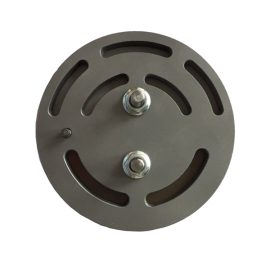The optimal performance of a reciprocating compressor is closely associated with the operation of its valves, especially in terms of efficiency and life. Many manufacturing industries have the reciprocating compressor as the backbone of their operations. This shows that they do not joke with compressor valve plates for several aspects of product creation.
Compressor Plate Valve
Main advantages are the following:
- Frictionless guided metallic and non-metallic valve plates for minimum wear and longest lifetime
- Up to 20 revisions of valve seat achievable, therefore very low life cycle costs
- Springs are fixed in the guard to achieve almost no spring wear
- Unequaled valve plate lifetime through careful material selection and special heat treatment. High grade X5 stainless steel is chosen as the standard material for metallic plate valves
- Lowest possible leakage rates thanks to a premium surface refinement
- 100% quality control: Every single metallic valve plate is leakage tested with a proprietary procedure
With non-metallic plates the following additional advantages apply:
- Higher ductility results in better impact properties
- More resistance to damage from liquids and debris
- Reduced wear on seat and guard during normal operation
- Greatly reduced secondary damage to other cylinder components in case of failure
| Compressor speed | max. 1’800 rpm |
| Pressure difference | max. 200 bar / 2’900 psi |
| Temperature range | from –200 to +250 °C / –328 to +482 °F |
| Diameter dimensions | min. 68 mm / 2.68 in, max. 383 mm / 15.08 in |
When the piston moves down during the intake stroke, the pressure in the cylinder drops, causing the inlet valve plate to lift and allow gas to flow into the cylinder from the suction line.
Discharge Valve Function:
When the piston moves up during the compression stroke, the pressure inside the cylinder increases. Once it exceeds the pressure in the discharge line, the discharge valve plate lifts, allowing the compressed gas to flow out of the cylinder and into the discharge line.
Advantages of Compressor Plate Valves
High Flow Capacity:
Plate valves can handle high flow rates due to their design, which allows multiple ports to be opened simultaneously. This makes them suitable for high-capacity compressors.
Durability:
The materials used for valve plates and seats, such as stainless steel or high-performance composites, are designed to withstand high pressures, temperatures, and the abrasive nature of some gases, leading to a long service life.
Efficiency:
Plate valves provide an efficient seal when closed, minimizing leakage and ensuring that the compressor maintains the desired pressure and performance levels.
Simplicity and Reliability:
The relatively simple design of plate valves means fewer moving parts, reducing the likelihood of mechanical failure and simplifying maintenance and repair processes.
In summary, a compressor plate valve is a vital component in reciprocating compressors, responsible for controlling the flow of gas into and out of the compression chamber. Its design offers high flow capacity, durability, and efficiency, making it suitable for a wide range of industrial applications. Proper maintenance and regular inspection are essential to ensure the longevity and reliability of these valves.












